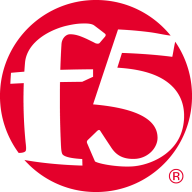

A10 Networks Thunder ADC and NGINX Plus are both strong contenders in the application delivery and load balancing market. A10 Networks seems to have the upper hand with its feature-rich platform that emphasizes security and cost-effective licensing, while NGINX Plus appeals to developers with its modularity and efficiency.
Features: A10 Networks Thunder ADC is known for its superior troubleshooting capabilities, flexible deployment options, and security features like SSL offloading and DDoS mitigation. It also supports single-pane traffic management. NGINX Plus excels in reverse proxy routing, caching, and load balancing, especially in high-throughput environments, making it suitable for DevOps and microservices with necessary persistence features.
Room for Improvement: A10 Networks could improve its graphical dashboards, WAF capabilities, and scalability in cloud environments. Enhancements to the UI and logging features are also suggested. NGINX Plus could benefit from a more user-friendly interface, improved memory optimization, and comprehensive cluster management. The high cost is another area mentioned for potential enhancement.
Ease of Deployment and Customer Service: A10 Networks Thunder ADC supports mostly on-premises deployments with reliable technical support, though there's room for better first-call resolutions. NGINX Plus offers deployment flexibility across public, hybrid, and on-premises environments with robust community and documentation support but could improve its setup process and support interaction.
Pricing and ROI: A10 Networks Thunder ADC is considered cost-effective with all-inclusive licensing, leading to significant ROI due to ease of configuration and reduced operational costs. NGINX Plus, while more expensive than the open-source version, offers a modular pricing model for customization, perceived as valuable though costly for smaller deployments.


A10 Networks Thunder ADC is a dynamic application delivery controller and advanced load balancer. Thunder ADC is a value-added solution provided by A10 Networks specializing in robust, trusted, scalable application services for cloud, hybrid, edge cloud, and on-premise environments focused on improving business processes and keeping infrastructures safe. The solution consistently provides server availability, improves content delivery, and protects at-risk applications. A10 Networks Thunder ADC easily controls hybrid and multi-cloud deployments using a Polynimbus strategy to minimize difficulties and costs for IT processes, facilitating overall improved business results.
A10 Networks Thunder ADC is effective for small to medium businesses (SMBs) to large enterprises. Service providers and cloud operators are all using A10 Network ADC to manage their large and fast-growing group of business-critical applications.
A10 Networks Thunder ADC supplies L4-7 load balancing with numerous layers of security using DNS and web app firewalls, comprehensive support for advanced encryption, single sign-on (SSO) authentication, and high-performance Perfect Forward Secrecy and Error Correction Code (PFS/ECC). Thunder ADC is designed upon A10 Networks Advanced Core Operating System (ACOS®) platform to provide consistent, efficient application performance and trusted security for any environment.
A10 Networks Thunder ADC Benefits
A10 Networks Thunder ADC Features
NGINX Plus is a versatile solution that offers load balancing, caching, proxying, and API deployment capabilities. It can be deployed on private or public clouds and is ideal for building CDN solutions. The solution can also be used to secure web applications and replace web services like Apache.
NGINX has helped organizations improve functioning, reduce downtimes, and offer a DevOps-friendly solution. Its community support and documentation are highly regarded, and its configuration is more straightforward, making it a recommended choice over HAProxy.
We monitor all Application Delivery Controllers (ADC) reviews to prevent fraudulent reviews and keep review quality high. We do not post reviews by company employees or direct competitors. We validate each review for authenticity via cross-reference with LinkedIn, and personal follow-up with the reviewer when necessary.